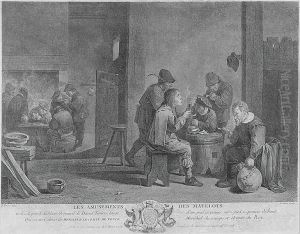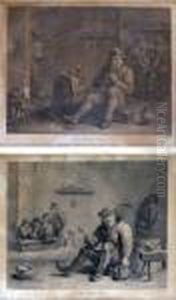Pierre Chenu Paintings
Pierre Chenu was a French engraver and draughtsman, whose work is less documented compared to the prominent artists of his time. Born in 1606, Chenu lived through a significant period in French art, during the reign of Louis XIV, a time when the arts flourished under royal patronage and the influence of the Baroque style was prominent. Despite the overshadowing fame of his contemporaries, Chenu contributed to the rich tapestry of French art in the 17th century with his meticulous engravings and drawings.
Not much is known about Chenu’s early life or training. It is believed that he was active in Paris, where he would have been exposed to the bustling art scene and the works of leading artists of the era. Chenu’s engravings often depicted landscapes, religious subjects, and scenes from mythology, reflecting the popular themes of his time. His style was characterized by fine detail and a mastery of light and shadow, which allowed him to create depth and texture in his engravings.
Chenu's works were primarily produced for the book market, illustrating texts and publications that catered to the educated elite of France. This was a common practice among engravers of his period, as the demand for illustrated books was high. These works not only highlight Chenu’s skill as an engraver but also provide insight into the intellectual and cultural interests of 17th-century France.
Despite his contributions, Pierre Chenu remains a relatively obscure figure in art history. His death in 1685 marked the end of a career that had navigated the complexities of the French art world during a time of great change and innovation. Today, Chenu’s engravings serve as valuable historical documents, offering a glimpse into the visual culture of his time and the aesthetic preferences of the French Baroque period. His legacy, though not as celebrated as that of his peers, underscores the importance of the many skilled artists whose work contributed to the richness of European art history.

